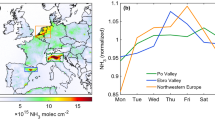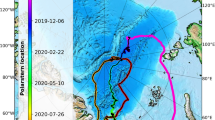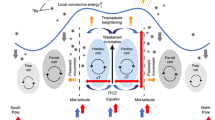Abstract
THE Amundsen–Scott station located at the geographical South Pole offers, by virtue of its extreme isolation from man-made pollution, a unique setting for the study of atmospheric tracers. In addition, the permanent snow cover provides for the atmosphere a homogeneous, inert and unchanging lower boundary.
This is a preview of subscription content, access via your institution
Access options
Subscribe to this journal
Receive 51 print issues and online access
$199.00 per year
only $3.90 per issue
Buy this article
- Purchase on Springer Link
- Instant access to full article PDF
Prices may be subject to local taxes which are calculated during checkout
Similar content being viewed by others
References
Lockhart, jun., L. B., Patterson, jun., R. L., and Saunders, jun., A. W., J. Geophys. Res., 71, 1985 (1966).
Regener, V. H., J. Geophys. Res., 69, 3795 (1964).
Brewer, A. W., and Milford, J. R., Proc. Roy. Soc., A, 256, 470 (1960).
Junge, C. E., Tellus, 9, 363 (1962).
Author information
Authors and Affiliations
Rights and permissions
About this article
Cite this article
ALDAZ, L. Surface Air Radioactivity and Ozone at Amundsen–Scott Station (90° S.), Antarctica. Nature 215, 722–723 (1967). https://doi.org/10.1038/215722a0
Received:
Published:
Issue Date:
DOI: https://doi.org/10.1038/215722a0
Comments
By submitting a comment you agree to abide by our Terms and Community Guidelines. If you find something abusive or that does not comply with our terms or guidelines please flag it as inappropriate.



